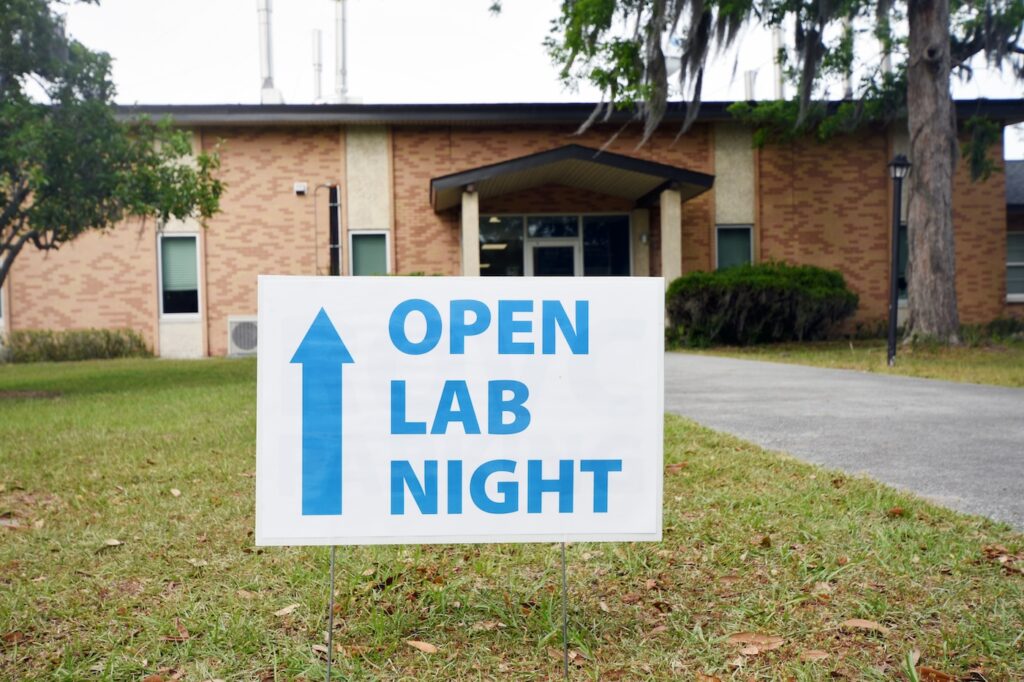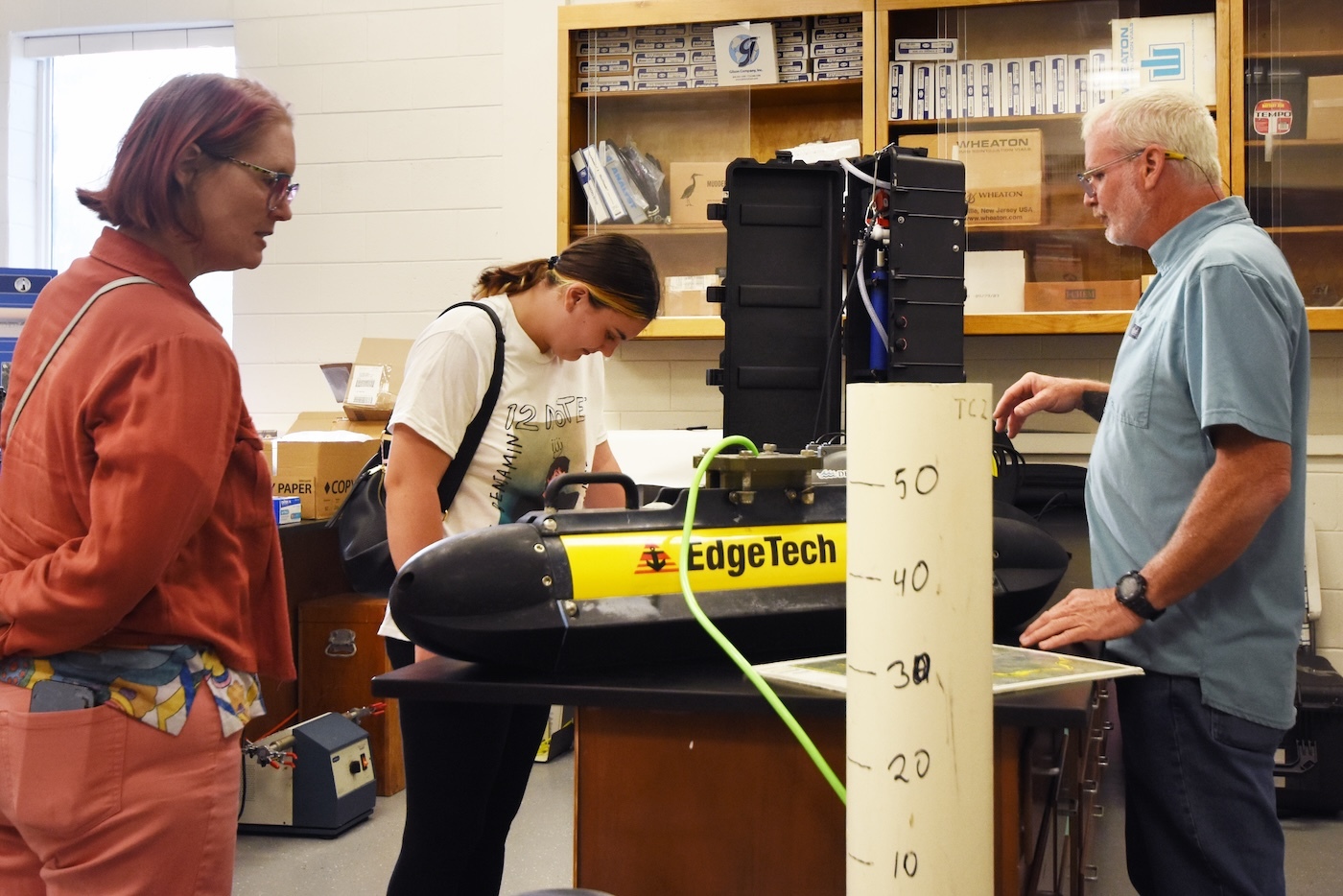
More than 60 visitors from the Savannah area and beyond gathered at the University of Georgia Skidaway Institute of Oceanography (SkIO) on Tuesday, April 22, for the Institute’s first Open Lab Night of 2025.
Open Lab Night offers the public a behind-the-scenes look into the labs and work of SkIO scientists, who open their labs to visitors and provide informal tours and explanations of their instruments and research.
“Open Lab Night is a way to connect our community members with the impactful, world-class oceanography research happening in their own backyard,” said Jackson Schroeder, SkIO’s public relations and communications coordinator. “It’s educational, but relaxed. Guests are free to roam around from one lab to another, check out state-of-the-art scientific instruments, and talk with our scientists about their work.”
Open Lab Night — April 2025
SkIO Director and geologist Clark Alexander, along with members of the Alexander Lab, spoke to guests about their work examining sediment distribution patterns and how shorelines change in response to storms and rising sea levels. Using advanced Geographic Information System (GIS) tools and remote-sensing equipment, the team monitors and tracks these changes along Georgia’s coast, among other research projects.
Associate Professor and physical oceanographer Catherine Edwards and members of her lab showed off their autonomous underwater vehicles, which they use to monitor hurricanes and the presence of Right Whales off the Georgia Coast.
Assistant Professor and biologist Adam Greer and two graduate students in his lab guided guests through an activity using cutting-edge instrumentation to analyze live plankton, which the lab members caught in the Skidaway River just an hour before the event.
Assistant Professor and biologist Sara Rivero-Calle, along with members of her lab, presented a model of the SeaHawk Ocean Color CubeSat satellite. The Rivero-Calle Lab uses optics to develop satellite tools that can help researchers monitor ocean health and water quality, such as harmful algal blooms, marine debris, suspended sediments, and ocean primary productivity.
SkIO hosts public programs all year long, including the Evening at Skidaway series, in which scientists sit down for conversations and answer audience questions about their work and pressing topics.
To stay up-to-date on upcoming events, sign up for the SkIO email newsletter and follow SkIO (@SkioInSavannah) on Instagram, Facebook and LinkedIn. Previous Evening at Skidaway events are also available on the SkIO YouTube.
About SkIO
The UGA Skidaway Institute of Oceanography (SkIO) is a multidisciplinary research and education institution located on Skidaway Island near Savannah, Georgia. The Institute was founded in 1967 with a mission to conduct research in all fields of oceanography. In 2013, SkIO was merged with the University of Georgia. The campus serves as a gateway to coastal and marine environments for programs throughout the University System. The Institute’s primary goals are to further the understanding of marine and environmental processes, conduct leading-edge research on coastal and marine systems, and train tomorrow’s scientists. For more information, visit www.skio.uga.edu.



